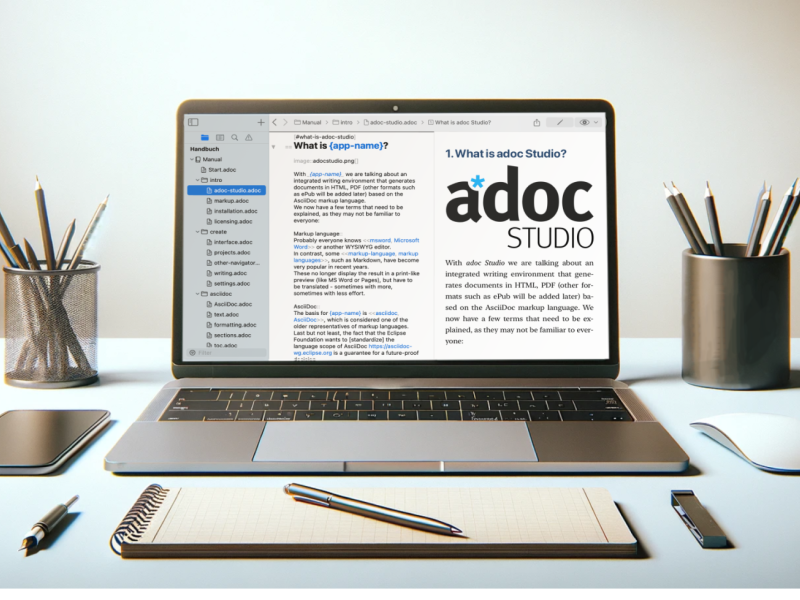Posted in technical writing.
Friction Points in Technical Writing and How to Solve Them
Antoni Cherif – .
With adoc Studio, you can write technical documentation and output it in various formats. Learn what to consider in this article.
6 Tips for Good Technical Writing
Technical writing is a fascinating yet challenging field. It requires not only technical know-how but also the ability to communicate complex information clearly and precisely. However, when creating technical documentation, friction points can arise that complicate the process. In this blog post, we aim to identify the most common friction points in technical writing and present possible solutions.
Understanding the Audience
One of the biggest challenges in technical writing is correctly understanding the audience. If technical content is not tailored to the needs and knowledge of the readers, it can lead to confusion and frustration.
Conduct surveys or interviews with potential users before writing. Create personas to identify different reader groups and understand their specific requirements. This way, you can tailor content to be more comprehensible and relevant.
Technical Knowledge vs. Writing Skills
Technical experts are often not the best writers. They may struggle to convey complex topics simply and understandably.
Encourage collaboration between technical experts and professional writers. Workshops and training sessions can help improve understanding of effective writing. Peer reviews of content by colleagues ensure that technical information is clearly formulated.

Unclear Terminology
Technical terms and jargon can deter or confuse readers, especially if they are not familiar with the topic.
Clearly define technical terms and use them sparingly. Create a glossary for complex terminology and explain these terms in context. This increases the accessibility of your documentation.
 adoc Studio
adoc Studio
Organize, Write and Share.
Documentation in AsciiDoc.
Organize, Write and Share.
Lack of Structure
Poorly structured documentation can make it difficult for readers to find the information they need, leading to frustration and inefficiency.
Use a clear, logical structure. Employ headings, lists, and paragraphs to organize the text. Tables of contents and search functions help users quickly locate relevant information.
Feedback Processes
Often, there are no clear processes for feedback and revisions, resulting in inconsistent content.
Implement regular feedback rounds and reviews. Tools like Confluence or Google Docs can help track changes and facilitate discussions. A good communication culture promotes the quality of the documentation.

Technological Changes
Technology is constantly evolving, and so is the related documentation. Information can quickly become outdated.
Create a plan for regular review and update of your documentation. Set automated reminders to ensure content remains current. Agile methods can help respond more quickly to changes.
Conclusion
Technical writing is a dynamic and challenging field where friction points can occur. However, these challenges can be successfully addressed by better understanding the audience, promoting collaboration, using clear terminology, and maintaining well-structured documentation. By addressing these friction points, you not only improve the quality of your technical documentation but also enhance the user experience for your readers.
You might also like
-
What is Technical Writing?
- Marvin Blome
- Published on
-
How to get into Tech Writing?
- Antoni Cherif
- Published on
-
Markup versus WYSIWYG
- Marvin Blome
- Published on




